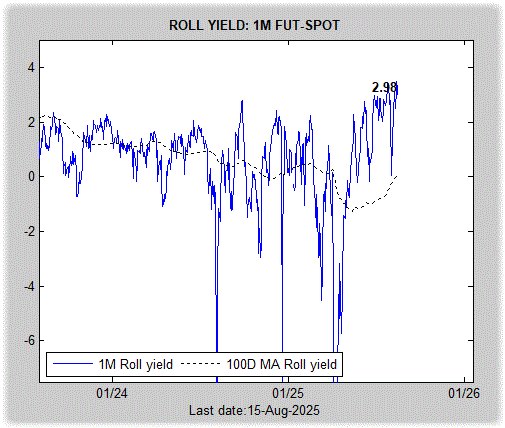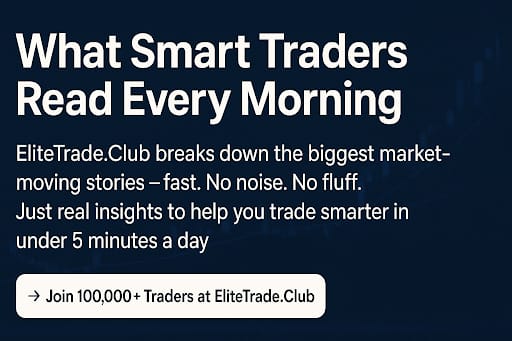- Harbourfront Quantitative Newsletter
- Posts
- Predictive Information of Options Volume in Equity Markets
Predictive Information of Options Volume in Equity Markets
How Options Volume Reflects Market Expectations
A lot of research in options literature has been devoted to the volatility risk premia and developing advanced pricing models. Much less attention has been given to volume. In this edition, I'll discuss some aspects of options volume.
In this issue:
The Smartest Free Crypto Event You’ll Join This Year
Curious about crypto but still feeling stuck scrolling endless threads? People who get in early aren’t just lucky—they understand the why, when, and how of crypto.
Join our free 3‑day virtual summit and meet the crypto experts who can help you build out your portfolio. You’ll walk away with smart, actionable insights from analysts, developers, and seasoned crypto investors who’ve created fortunes using smart strategies and deep research.
No hype. No FOMO. Just the clear steps you need to move from intrigued to informed about crypto.
Latest Posts
The Impact of Market Regimes on Stop Loss Performance (12 min)
The Limits of Out-of-Sample Testing (12 min)
Sentiment as Signal: Forecasting with Alternative Data and Generative AI (12 min)
Behavioral Biases and Retail Options Trading (10 min)
The Rise of 0DTE Options: Cause for Concern or Business as Usual? (11 min)
Can Options Volume Predict Market Returns?
Most of the research in equity and index options has been devoted to volatility and the volatility risk premium. Relatively less attention is paid to options volume.
Reference [1] examined options volume from the perspective of in-the-money options order imbalance.
Findings
The public directional order imbalance (DOI) of S&P500 in-the-money options reliably predicts negative market returns over monthly horizons extending up to three months.
Predictability from DOI remains significant even after controlling for established sentiment indicators, volatility indexes, and various macroeconomic uncertainty measures.
In-the-money options are largely insensitive to VIX fluctuations, making DOI a clearer measure of investors’ directional market sentiment.
Findings show DOI maintains predictive strength up to nine months, with long-term persistence explained by the limits-to-arbitrage framework.
The negative predictive power of DOI primarily comes from public customers, not firm proprietary traders, revealing differences in institutional decision-making quality.
Evidence suggests that mutual funds and pension funds, often assumed to be highly sophisticated, sometimes make suboptimal choices reflected in ITM options trading.
DOI has no predictive influence across broader financial asset classes, making its forecasting power specific to equity index returns.
High-tech industry stocks appear most sensitive to DOI, reinforcing connections between sentiment-driven trading and sector-specific return predictability.
Predictability of DOI strengthens during recessionary periods, highlighting how sentiment effects intensify when markets face heightened uncertainty and tighter arbitrage opportunities.
In conclusion, the study demonstrates that in-the-money options volume, particularly public directional order imbalance, provides valuable insight into investor sentiment and market dynamics, offering strong predictive power for future returns, especially during recessionary periods and under limits-to-arbitrage conditions.
Reference
[1] Wang, Li, and Ni, Sophie Xiaoyan and Stouraitis, Aristotelis, Index Options Trading and Sentiment (2021). SSRN 3981994
Option Volume Imbalance Is a Predictor of Market Returns
The previous article showed that options volume is a predictor of future market returns. On a similar topic, Reference [2] examined the Option Volume Imbalance (OVI) and its relationship with the future prices of the underlying assets. The authors utilized data from the PHLX exchange to conduct research.
Findings
The study highlighted Option Volume Imbalance as a useful feature that helps forecast future equity returns with measurable predictive power.
Using PHLX exchange data, researchers analyzed OVI signals across multiple market participant groups, uncovering significant differences in predictive accuracy.
Market Makers’ OVI produced the strongest results, achieving annualized Sharpe Ratios up to 4.5, even under simple betting frameworks excluding costs.
Extreme OVI signals, grouped into tail portfolios, generated daily profits reaching 4 basis points depending on the portfolio sizing strategy employed.
Evidence showed Customer and Broker OVIs carried some predictive value, but Firm Proprietary trades and Professional Customers offered no meaningful signals.
Performance improvements emerged when analyzing OVI magnitude, with second to fourth quantile ranking groups consistently outperforming other quantile groupings.
Stronger predictive signals originated from option contracts with high implied volatility compared to contracts with relatively lower implied volatility levels.
Put option volumes were more informative than call volumes, suggesting downside-oriented trades carry greater predictive content in equity markets.
Overall, the study demonstrated that OVI effectively predicts overnight excess market returns, particularly when driven by Market Maker activity.
In short, the authors showed that the Option Volume Imbalance has predictive power on directional overnight price movements for the underlyings. They also demonstrated that the Option Volume Imbalance from high implied volatility contracts is significantly more informative than options contracts with low implied volatility.
Reference
[2] Michael, Nikolas, and Cucuringu, Mihai, and Howison, Sam, Option volume imbalance as a predictor for equity returns (2022).
Closing Thoughts
Overall, the research on options volume and order imbalances provides strong evidence that these measures contain valuable predictive information. Whether through DOI in in-the-money options or OVI across participant groups, the findings reveal consistent links between sentiment, volatility, and returns.
These papers contribute to the body of research that focuses on the predictive power of options volume. The research could open the door to further studies that examine option volumes from different data sets and at different time frames.
Educational Video
Volume and Open Interest Explained
In this video, Mike from Tastytrade explains the concepts of open interest and volume in options trading and their role in determining market liquidity. He defines open interest as outstanding contracts and volume as contracts traded daily, illustrating how trades affect each. He highlights that higher values, especially above 1,000 contracts, indicate stronger liquidity and fairer market pricing.
Missed the Market’s Big Moves?
The market moves fast - we make sure you don’t miss a thing.
Elite Trade Club delivers clear, no-fluff market intel straight to your inbox every morning.
From stocks to big-picture trends, we cover what actually matters.
Join 100,000+ readers who start their day with the edge.
Volatility Weekly Recap
The figure below shows the term structures for the VIX futures (in colour) and the spot VIX (in grey).

Markets pulled back on Monday despite news that the White House had extended the China tariff deadline. However, the bearishness was short-lived as markets marched higher, with the S&P 500 and Nasdaq reaching new all-time highs. Overall for the week, the S&P 500 rose 0.94% and the Nasdaq gained 0.81%.
Oil fell early in the week, then recovered, before falling again. Gold continued to trade within July's range. Cryptos rallied, but Thursday and Friday brought a pullback in prices, though overall sentiment remains bullish for now.

On the volatility front, the picture remains the same as last week. Both spot and VIX futures remain in contango, and the roll yield continues to be elevated.

Around the Quantosphere
Breaking Into Quant Trading: A Practical, No-Fluff Guide (Hackernoon)
Finance & Quant Networking Event: PhDs and Postdocs (Yale)
Billions Flow to New Hedge Funds Focused on AI-Related Bets (MSN)
Battle-tested crisis alpha in an era of heightened volatility (Hedgeweek)
Investing legend Seth Klarman talks about how his hedge fund is using AI: 'Essentially a capable assistant' (Yahoo)
Renaissance Technologies suffers another tough month amid quant headwinds (Hedgeweek)
Hedge funds shift bets to double down on Big Tech amid AI boom (Yahoo)
Former AQR and Two Sigma VP: How Quant Funds Will Use AI, LLMs, and Agentic Workflows (youtube)
Hedge fund Brevan Howard becomes the largest institutional holder of IBIT with $2.3 billion in shares (msn)
Disclaimer
This newsletter is not investment advice. It is provided solely for entertainment and educational purposes. Always consult a financial professional before making any investment decisions.
We are not responsible for any outcomes arising from the use of the content and codes provided in the outbound links. By continuing to read this newsletter, you acknowledge and agree to this disclaimer.


